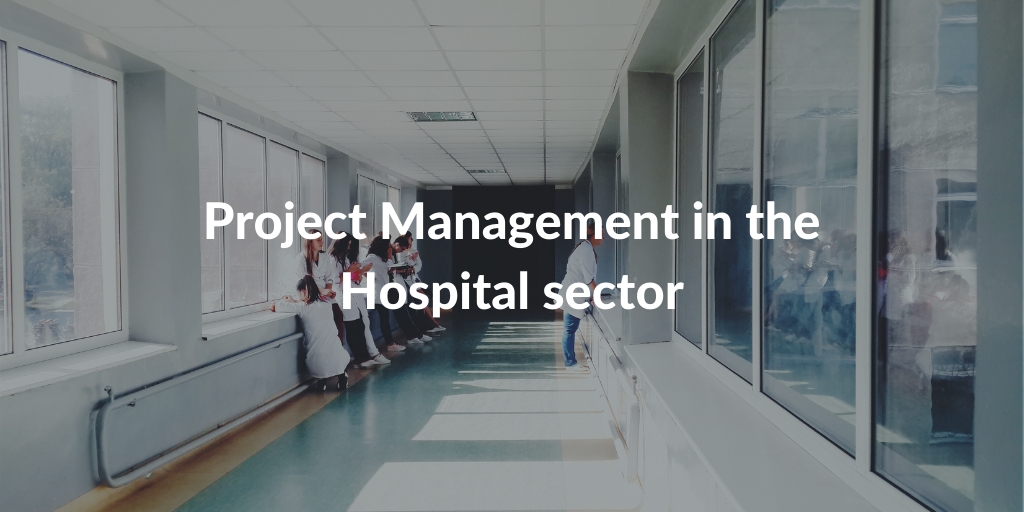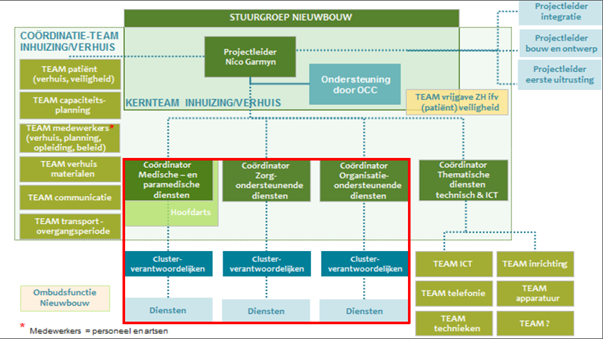Project Management in the Hospital sector

Maddy is a staff member of the Process and Project Management of the Quality and Strategy department of AZ Sint-Maarten, a hospital in Belgium. Over the years she gained lots of hands-on experience with Project Management and is currently responsible for the PMO.
What’s your current job title? What is it you actually do?
I am a staff member of Process and Project management.
My position is part of the Quality and Strategy department within AZ Sint-Maarten (hospital) in Mechelen.
Within my position, I have different roles and responsibilities, of which:
- Responsible for PMO, which includes the following:
-
- Follow up all current projects in preparation of the Project Management Committee (the decision-making body).
- Capture all project ideas and convert (translate) them into a concrete project definition in preparation for PMC (depending on the go / no go decision of the project).
- Prepare the agenda for PMO + PMC.
- Project coaching this can differ from refining a project definition to coaching during the entire project planning/execution.
- Providing all documentation regarding project work within the hospital.
- Provide training on project management, both group and one-on-one training.
- Project manager for larger cross-departmental projects (often hospital-wide projects).
- I filled in this role during the run-up of the relocation to the new hospital, currently, I am involved in less cross-departmental projects.
- Project leader of the project and development of our new mission and vision (starting from 2021).
- Lean coach / lean expert, we recently started implementing a lean philosophy which includes continuous improvement. My role is to guide the entire process of cultural change, partly by supplying methodologies and coaching.
- Supervisor process optimization, using the lean methodology.
- Strategic preparations of all kinds aimed at the whole range of “quality“.
How did you arrive at your current position?
I started at AZ Sint Maarten as main responsible / coordinator of reception services and patient administration. Within this role, I started an optimization process and this led to my new role within the Quality and Strategy department in 2011.
While working at the Quality and Strategy department, the organisation decided to put a separate organ in place solely focused on project management. AZ Sint Maarten started this service in 2012 and I got the position as ‘project employee‘. At this point in time, we started our PMO and I have been actively involved with this.
To further develop myself I started a Master in Management and Policy of Healthcare and partly due to this in 2016 I got promoted to my current position.
From my current position, I have been appointed as Project Leader of various projects related to the relocation to the new hospital. I managed the ‘telephone’ project, which included the process, number plan, devices, different types of calls etc.
But also worked in the project regarding waiting room management (including tools), communication screens, implementation of SmartAIM (application for identity and access control) & badges.
Another crucial project I have been part of is the moving of patients to the new structure.
You work in a hospital, you think the hospital sector approaches PM differently than other sectors? If so, how?
Yes, I am sure about it.
Within the Hospital sector, it is very difficult to be able to appoint “dedicated project managers“.
Operationality and BAU (business as usual) are always given priority, as the main responsibility of the hospital is to provide care. Project management and change always come at a second place and it is difficult to fully assume the role as Project Manager.
As a result, Project Leadership must often (usually) be taken up within the hours of another position and has become a very sensitive topic in terms of financing.
What are the types of challenges that you face in Project Management and how do you overcome these challenges?
The biggest challenge is to keep everyone aware of the structures that we set in place, the fixed agreements that must be followed before a project can and has the approval to start.
This calls for persistence and a certain “stubbornness“. I realized that I have to push others to see the importance of the structure. This is a delicate process and I noticed that sometimes it is wise to let the topic rest for some time. Only to push again after!
The organisation needs a certain structure, but this cannot be enforced.
You have to systematically make this visible and show that the structure does contribute to efficiency and success.
On the other hand, there is the challenge of the constant trade-off that has to be made between theory and practice within Project Management. Within Project Management, you must invest sufficient time in the “administrative” part, such as project definition, project progress, planning, documentation of decisions, etc.
Often that documentation is considered “too much” / “too bureaucratic“, but it has to be done nonetheless.
We always approach this from a pragmatic approach and do not take it to the extreme, but we advocate minimal processing of the Project because this is the only way to ensure that Projects can be followed up, supported and lead to success.
I know that the hospital you work for just merged with two other hospitals.
How was that handled?
Between 2016 and 2018 we had a slightly different project approach than the “normal PMO” as we were in the middle of the relocation. This “temporary PMO” concerned a whole programme of projects with a clear structure.

The structure was followed very strictly. All other projects were discontinued/postponed.
During that period we were guided by consultants, 1 of whom acted as ‘PMO‘ as I was active within the projects themselves.
In 2019, after we moved in, we took a close look at the entire operation of the PMO and we have been working on the new operative PMO since 2020.
What are the benefits of the PMO and how can you measure these?
The PMO provides a clear overview of current affairs, steering towards our strategic objective (mission/vision).
It helps us to do things right instead of doing the right things and offers structure to the organisation.
In addition, there is the advantage that the PMO has on my position, as it leaves me with more time so that I can take on the role as a “coach” within projects. This improves the way of working in the organisation in a project-based manner and helps the organisation acquire more maturity.
How do we measure the benefits?
Current projects are closely monitored and if anything deviates from the original plans, this is put on PMC’s agenda. As a result, we keep ‘the pressure high‘ and people do not fall into normal operationality.
This helps us that projects do not get ‘forgotten’.
We have a tool that contains all projects so that status follow-up is (almost) continuously ‘up to date‘.
From this tool, we can create reports and provide an overview of all people involved in the project.
Did the global pandemic change the approach to PM in hospitals? How?
Yes, projects are running late and there are some that are no longer relevant due to new complications.
In our case, this mainly means that there is a delay in the dissemination of knowledge about project-based working. For example, I was delayed in my guidance in drawing up project definitions.
A delayed project definition automatically means a delayed start date of the project.
What kind of advice would you give to the PM staff in hospitals to prepare for the future coming years?
Ensure a good internal project structure and provide clear role descriptions within this structure.
Especially if there is a cultural shift needed towards a more active project management structure.
IT projects and business projects in hospitals cannot be fully compared and neither can project management. Business is often a “change process” that needs to be tackled differently than simply installing an ICT application.
It is also advisable to have someone in the “lead” in the follow-up of projects – a position similar to my position.
This person is responsible to constantly push for the same goal. The entire operation of PMO takes time and is also a cultural change in the organisation. Do not underestimate this!
What are three things you have told yourself that you would like to learn in the near future to develop yourself as a professional?
- I already know lots about the Lean methodology, but I want to master it more and more through an enormous amount of practice and practical examples.
- More knowledge and expertise regarding the budgeting of PMO and portfolio (TCO).
- Explore different coaching techniques, in order to offer the right coaching at the right time to reach the set goal.

Maddy Silverans
Maddy is a staff member of the Process and Project Management of the Quality and Strategy department of AZ Sint-Maarten, a hospital. Over the years she gained lots of hands-on experience with Project Management and is currently responsible for the PMO. Maddy has her Black Belt Certification and also works as a coach.
Maddy is a true go-getter due to her history and love for sports.







